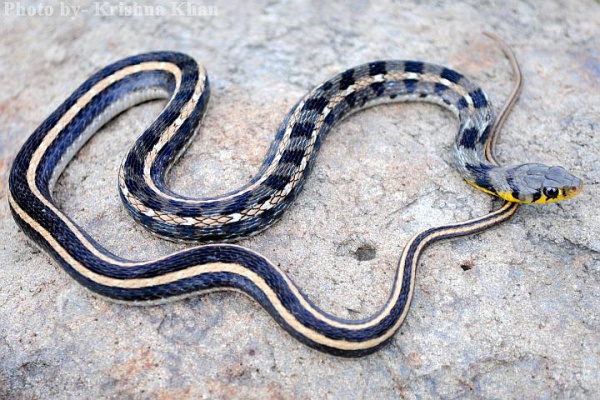Facts About Buff striped keelback
The buff-striped keelback is a nonvenomous snake found throughout Asia and is a member of the colubrid family. It is the sole species of the genus Amphiesma and belongs to the Natricinae subfamily. Renowned for its docile nature, this snake primarily preys on frogs and toads.
Visually, the buff-striped keelback resembles the American garter snake, displaying olive-brown to gray tones with distinct yellow stripes running along its body and black crossbars. It has a slender build, a long tail, and keeled scales on its back.
There are two color variations of this snake: one with a grayish-blue interscale color and another called erythrostictus, which features a vibrant bright vermillion interscale color, typically found in coastal regions. Key identification features include specific scale patterns, stripes, and particular body measurements.
Generally, the buff-striped keelback measures between 40 to 50 cm in length, with females being slightly longer than males. This snake is widespread across South and Southeast Asia, from Pakistan to China and Indonesia. It thrives in well-watered lowland plains and hills, primarily feeding on small amphibians.
These snakes are oviparous, laying 5 to 10 white eggs in underground burrows. Hatchlings are about 13 to 17 cm long and feed on small frogs, tadpoles, and insects. Being diurnal, the buff-striped keelback is active during the day and can move efficiently both on land and in water. When threatened, it displays defensive behaviors such as inflating its body or flattening its head.
The buff-striped keelback is not currently a conservation concern, as it is fairly common in its habitat. It is particularly abundant during the rainy season and goes into aestivation during hot weather. This snake is known by various local names across the regions it inhabits.
